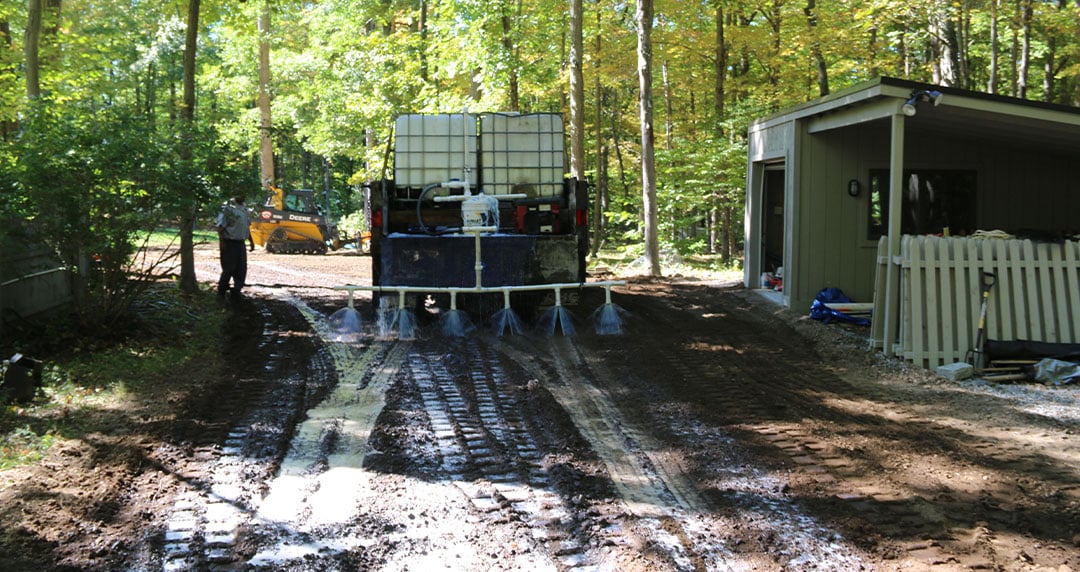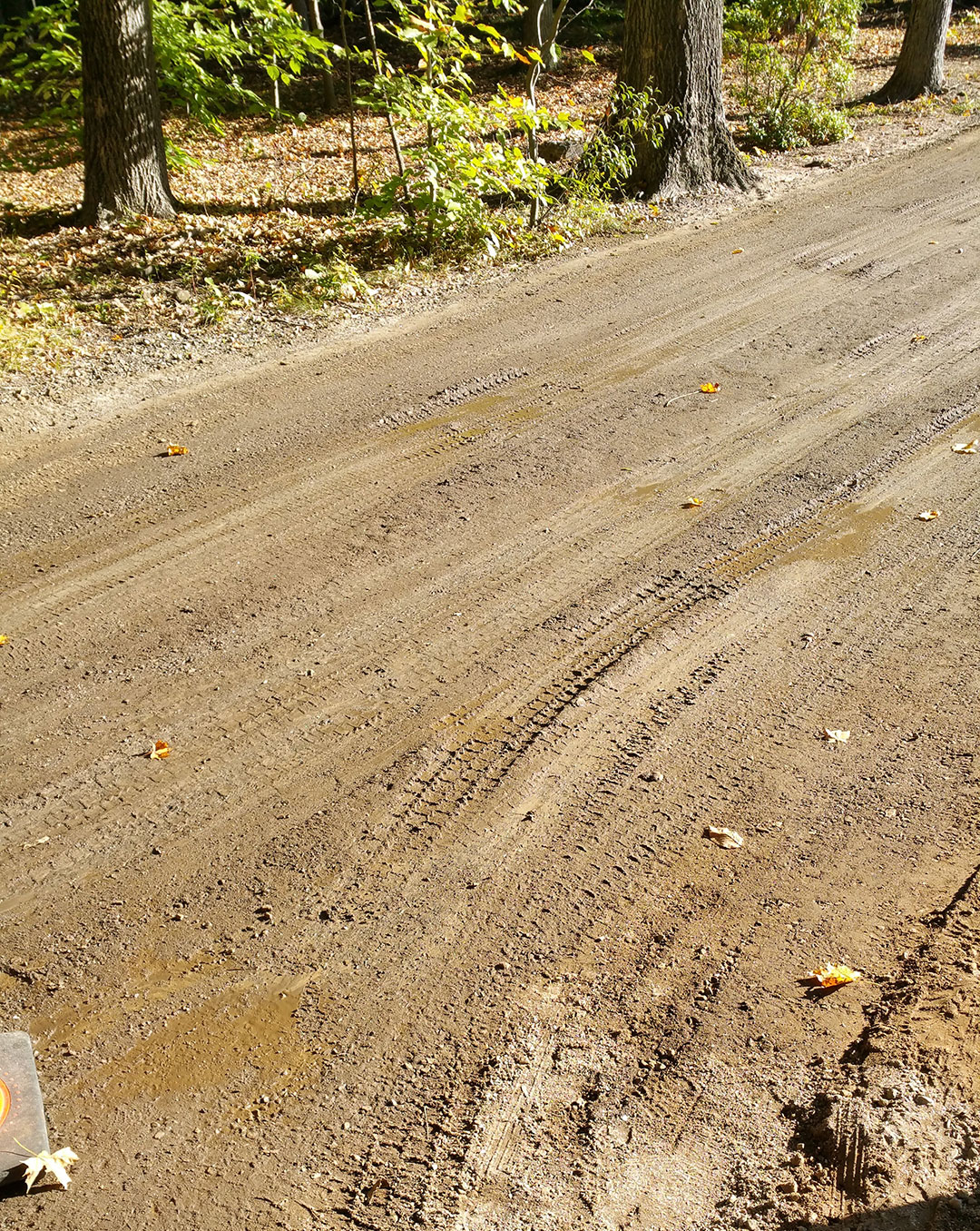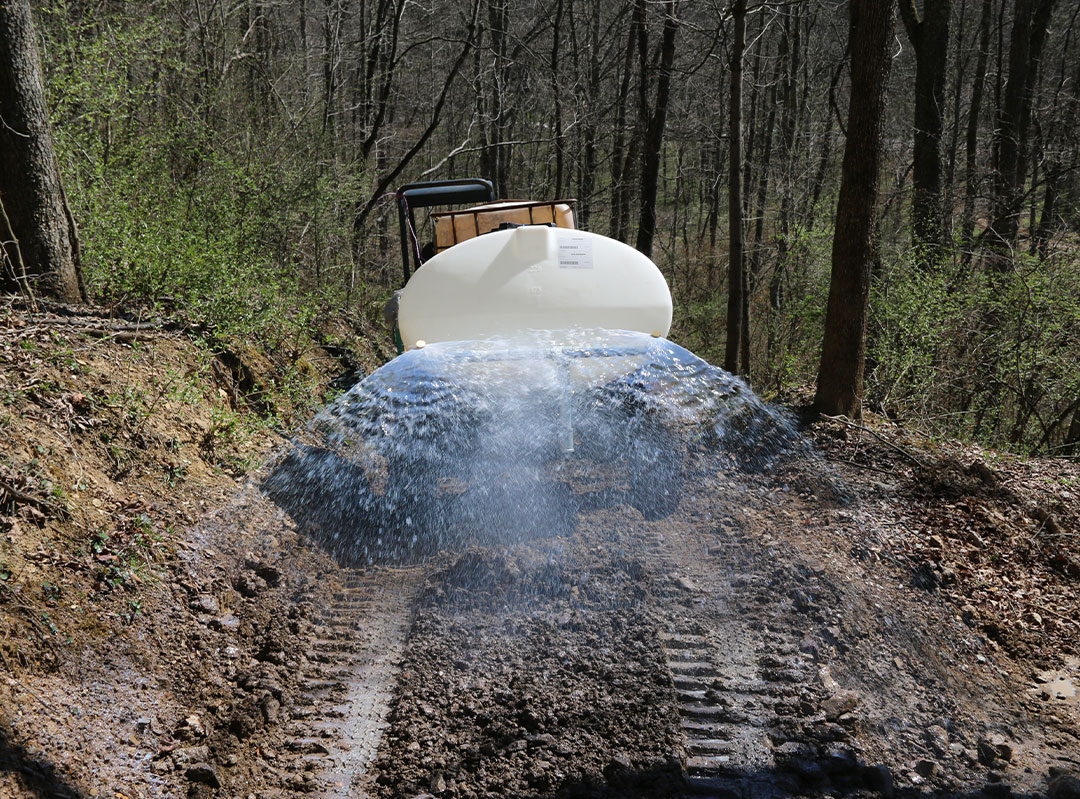
Why AggreBind is used for Firebreaks
AggreBind’s unique soil stabilization technology is ideal for creating fire-resistant firebreaks. Its proprietary long-string cross-linking copolymer formulation forms a durable, water-resistant layer that withstands extreme heat, withstanding temperatures up to 325°F (163°C) without degrading. This resilience makes an AggreBind firebreak a reliable solution in high-risk fire zones.
Two Types of AggreBind Firebreaks

- Topical Treatment Firebreaks: After clearing vegetation, AggreBind RoadMaster is applied topically at a 0.25 ltr to 0.35 ltr rate, creating a hardened, wind-resistant surface that locks down dust and prevents vegetation growth. Topical treatments typically last up to one year or more and require reapplication over time to maintain their effectiveness.
- Infused Treatment Firebreaks: For a more permanent solution, the soil is scarified to approximately 3 inches (8 cms), mixed with RoadMaster and then bladed, compacted, and sealed. This method bonds the soil particles at a molecular level, creating a quasi-permanent firebreak that has lasted up to a decade or more, with our earliest installations going back to 2009. These firebreaks are highly effective for areas with recurring wildfire risks, and even for emergency access roads
The Value of AggreBind Firebreaks
AggreBind firebreaks offer several critical advantages:
-
- Prevents Vegetation Regrowth: The heavy duty and long-lasting surface crust prevents plant life from returning, eliminating fuel for wildfires.

- Heat Resistance: The unique copolymer structure resists high temperatures without breaking down, maintaining firebreak integrity.
- Durability: With infused firebreaks, the interlocking bonds provide exceptional stability and resistance to environmental wear.
AggreBind’s firebreak solutions have been successfully implemented in projects worldwide, demonstrating their effectiveness and reliability in diverse environments. By choosing AggreBind, project managers can create long-lasting firebreaks that safeguard critical infrastructure, commercial assets, and minimize wildfire risks.
